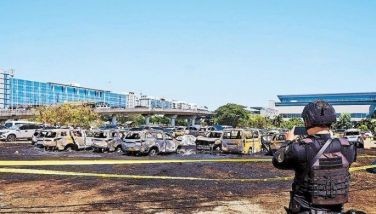#Journeyto30 Triple disaster
MANILA, Philippines – March 11, 2016 marked the fifth anniversary of the Japan earthquake, tsunami and nuclear disaster.
Five years since the disaster unfolded, our collective memory of it remains fresh, thanks to blow-by-blow coverage by Japanese news networks. From our TV sets and on the Internet, we saw buildings and homes buckling and crumbling in the intense 8.9 tremor, followed by a wall of water that inundated whole towns and cities. To make matters worse, it triggered a meltdown at the Fukushima Daiichi Nuclear Power Plant that sent radioactive material leaking into the air, ground and sea.
All in all, the triple disaster took almost 16,000 lives, injured more than 6,000 and left over 2,500 people unaccounted for. The disaster took a toll on the ailing Japanese economy at a cost of $249 billion.
But the media coverage also showed us how steadfastly disciplined and organized the Japanese remained amid the catastrophe that hit their country. There were no instances of looting, even as business establishments, government offices and individual homes were abandoned. Even sushi that was left in a food cart at Sendai Airport remained untouched.
Less than 24 hours after the disaster, emergency services and the Japan Self-Defense Forces quickly mobilized to rescue survivors and provide temporary shelter and relief. Even the Japanese crime syndicate, the Yakuza, helped in maintaining order in the aftermath of the disaster. A global relief effort quickly went into motion, sending billions in food, water, emergency shelters and supplies to the affected region.
In designated evacuation centers, floor space for affected families was partitioned equally. There were designated areas for eating, sanitation and waste management. In the few business establishments that were left standing and open, queues of people hoping to buy basic needs were orderly.
These scenes are in stark contrast to how Filipinos respond during disasters. In the aftermath of Super Typhoon Yolanda in 2013, widespread looting was reported in Tacloban City, the epicenter of the disaster. Survivors weren’t able to rely on local emergency services for help because the deluge devastated them as well. Hospitals were unable to cope with the huge number of injured patients because the storm surge had washed away most of their equipment and they had no backup power. Unidentified bodies lay along the side of major roads, with some burying their dead right on the spot. First responders from the government arrived only a day after the typhoon made landfall. And with the more than P1 billion in foreign aid given to the Philippines, survivors were given flimsy, wooden, temporary shelters that would not withstand the elements.
Five years later, however, more than 174,000 people remain displaced by Japan’s triple disaster, majority of which were forced to leave their homes by the nuclear disaster in Fukushima. Many still live in temporary shelters, uncertain if they will be able to ever go back to their homes. Others have decided to permanently relocate to other Japanese cities. The Japanese government estimates that the cleanup in Fukushima could take 40 years, considering the extent of the radioactive leak.
Still, despite the lingering problems, Japan’s rapid recovery from the triple disaster that rocked it was unprecedented. None of the debris left behind by the tsunami can be seen; only the empty lots indicate its existence. New roads, schools and homes have been built, while airports and seaports have reopened.
There is definitely a lot to be learned from the Japanese on how to cope with and respond to natural disasters, and most importantly, on how to prepare for such events.
- Latest
- Trending






























